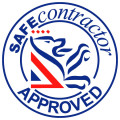Who has the responsibility
Having a Fire Alarm is simply not enough; it must be under a service contract to comply with B.S.5839
Did you Know?
If your Fire alarm is not covered by a maintenance programme it does not Comply with BS 5839
no matter to which standard it was installed.
The standard recommends that your fire alarm is serviced four times per annum, or not less than two times per annum dependant on the size of the system.
The Regulatory Reform (Fire Safety) Order 2005 (FSO) came into effect in October 2006 and replaced over 70 pieces of fire safety law.
The FSO applies to all non-domestic premises in England and Wales, including the common parts of blocks of flats and houses in multiple occupation (HMOs). The law applies to you if you
are:
- Responsible for business premises
- An employer or self employed with business premises
- Responsible for a part of a dwelling where that part is solely used for business purposes
- A charity or voluntary organisation
- A contractor with a degree of controll over a premises
- providing accomodation for paying guests
Under the FSO, the responsible person must carry out a fire safety risk assessment and implement
Domestic Fire Alarm Categories
Fire Alarm British Standard - BS 5839 Part 6 2004
Installations in Houses and HMOs - your risk assesment will tell you what must be fitted
This part of the british standard is split into 3 categories and are as follows :-
- LD1 - Alarms in all circulation spaces that form part of escape routes and all areas where a fire might start, but not bathrooms, shower rooms or toilets
- LD2 - Alarms in all circulation spaces that form part of escape routes and or areas that present a high fire risk
- LD3 - Alarms in circulation spaces that form part of escape routes
The category of system that should be installed in a building is often defined by Councils, Insurance Companies, Fire Officers, Building Control and many others.
The above categories indicate the category of system that should be installed. Further to this information different grades of system may be specified. These are as follows:-
- Grade A - A full system with control and indicating equipment installed to BS 5839:Part 1
- Grade B - Detectors and sounders using simpler specified equipment
- Grade C - Detectors and sounders or alarms with central control
- Grade D - Mains powered alarms with an integral stand-by power supply
- Grade E - Mains powered alarms with no stand-by power supply
- Grade F - Battery powered alarms
These grades are used in conjunction with the category type, to indicate what type of system should be installed within the property. For example if an LD2 Grade A system is requested, this would require a system with alarms in circulation areas that form escape routes and high fire risk areas with the equipment with control and indicating equipment compliant to BS5839 Part 1.
Contact us
We can be reached on:
Mobile 07973 327 578
Fax 01372 210 868
Email peter@swanelec.com
Or you are welcome to use our Contact form
News
New website
We have a new website. You can now find information on all our services online.





